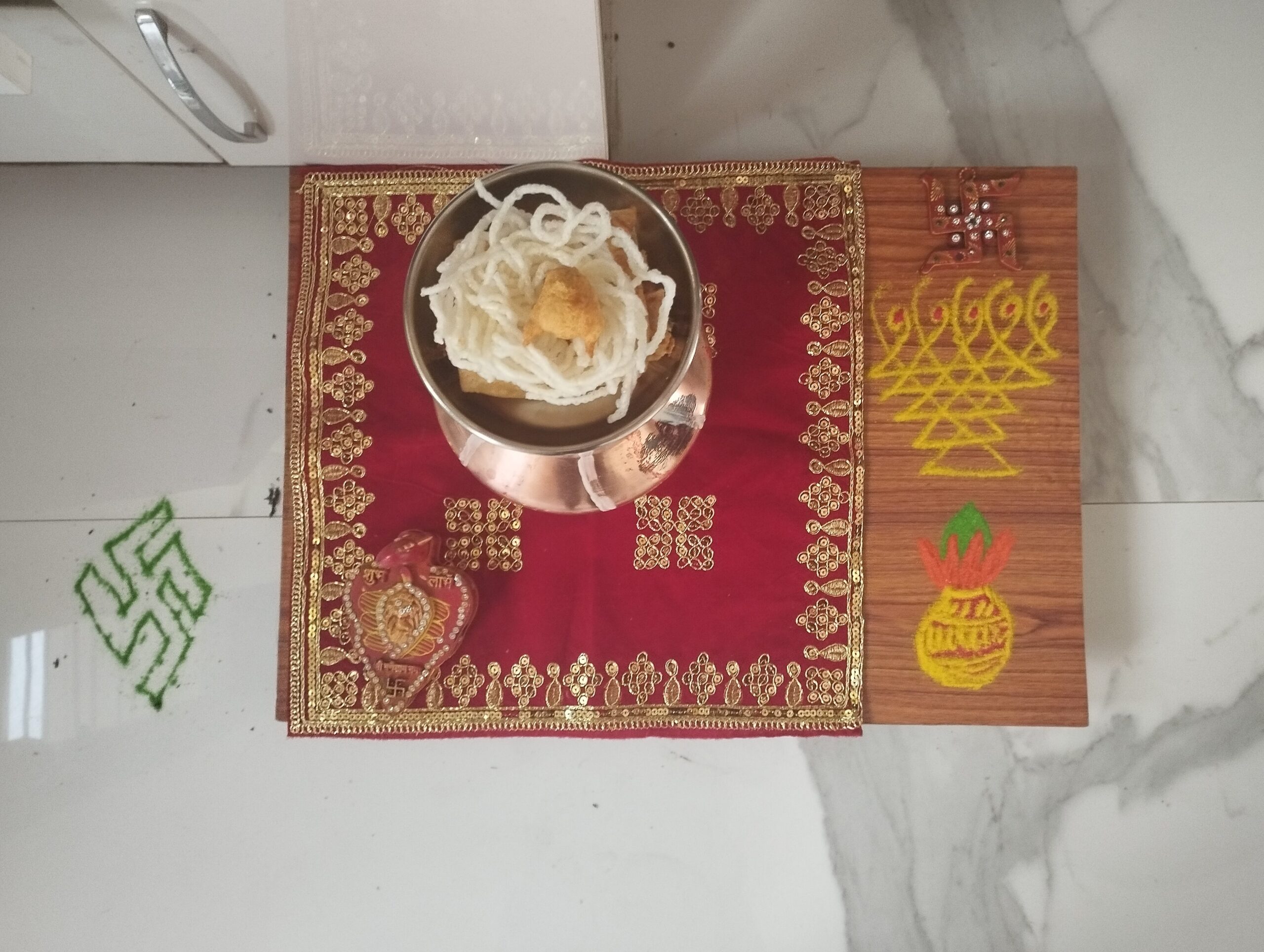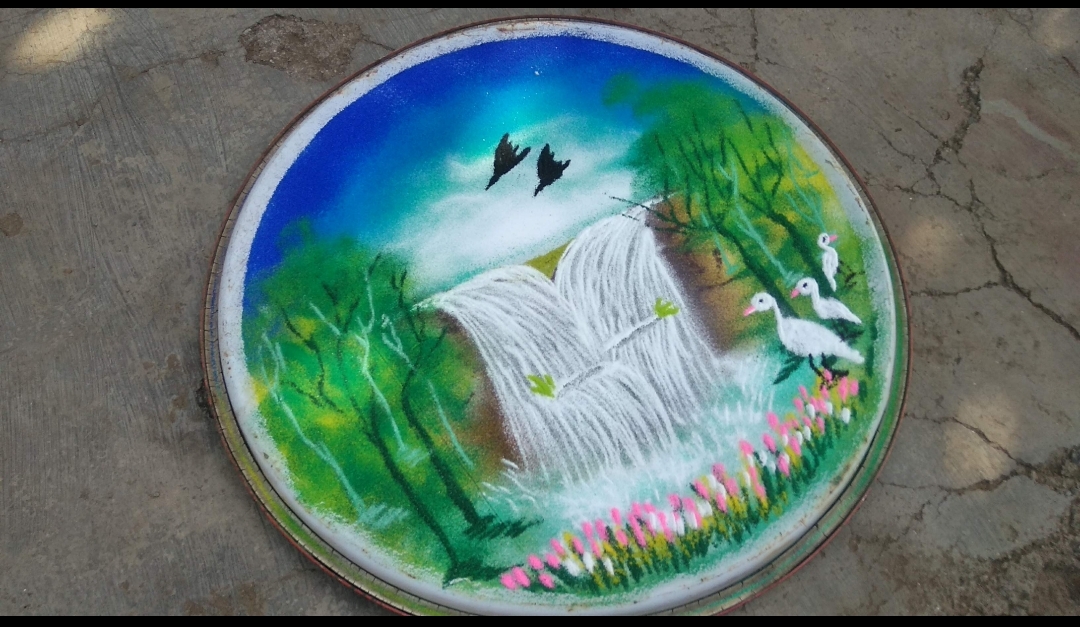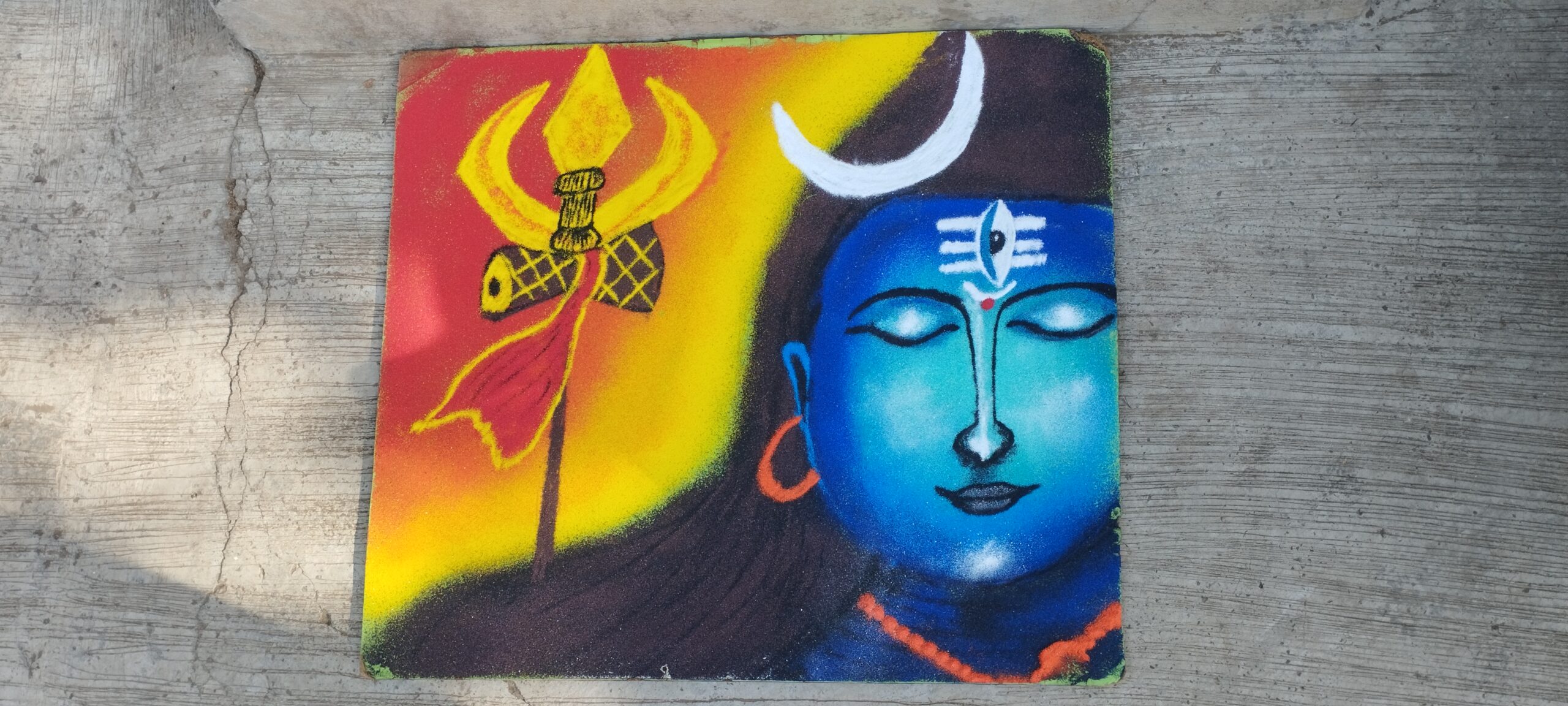Rangoli around kalash


The kalash is a special pot used in Hindu rituals. It symbolizes abundance and life. During pujas, it represents the entire universe. People decorate it with colorful flowers and sacred symbols. The water inside the kalash is believed to hold divine energy and is treated with respect.
The kalash holds great significance in Hindu ceremonies. It is often placed on a bed of rice, symbolizing prosperity and fertility. The water inside the kalash is considered holy and is used to purify the surroundings and the participants of the puja.
The Significance of Coconut:
Coconut is another important symbol in Hindu religious ceremonies. It is a fruit with a hard shell and white flesh inside. The coconut is considered auspicious and is offered to deities during pujas. It represents purity, fertility, and the divine consciousness.
The hard shell of the coconut symbolizes the ego and the white flesh represents the pure soul. When the outer shell is broken, it signifies the breaking of the ego and the realization of the divine within. This breaking of the coconut is an integral part of Hindu rituals.
During the puja, the coconut is usually placed on top of the kalash or offered directly to the deity. It is considered a sacred offering and is believed to please the gods and goddesses. The water inside the coconut is believed to be pure and is used in various rituals to sprinkle on devotees as a form of blessing.
The Significance of Mango Leaf:
Mango leaves hold special significance in Hindu religious rituals. They are considered symbols of auspiciousness and are used to decorate homes, temples, and puja spaces. The vibrant green leaves are believed to attract positive energy and ward off evil spirits.
During pujas, a bunch of mango leaves is often tied together and placed at the entrance of homes or temples. This is done to purify the space and create a welcoming environment for the deities. Mango leaves are also used to make torans, which are decorative hangings that signify prosperity and good fortune.
In addition to their decorative purposes, mango leaves are believed to have medicinal properties. They are known for their antimicrobial properties and are used in Ayurveda, the traditional Indian system of medicine, for various purposes.
In Hindu religion, the kalash, coconut, and mango leaf hold immense significance in religious ceremonies and pujas. The kalash symbolizes the universe and abundance, while the coconut represents purity and divine consciousness. Mango leaves are considered auspicious and are used for purification and attracting positive energy. These symbols help create a sacred atmosphere and invoke blessings during worship. Understanding their meanings and significance can deepen our appreciation for Hindu rituals and traditions.




